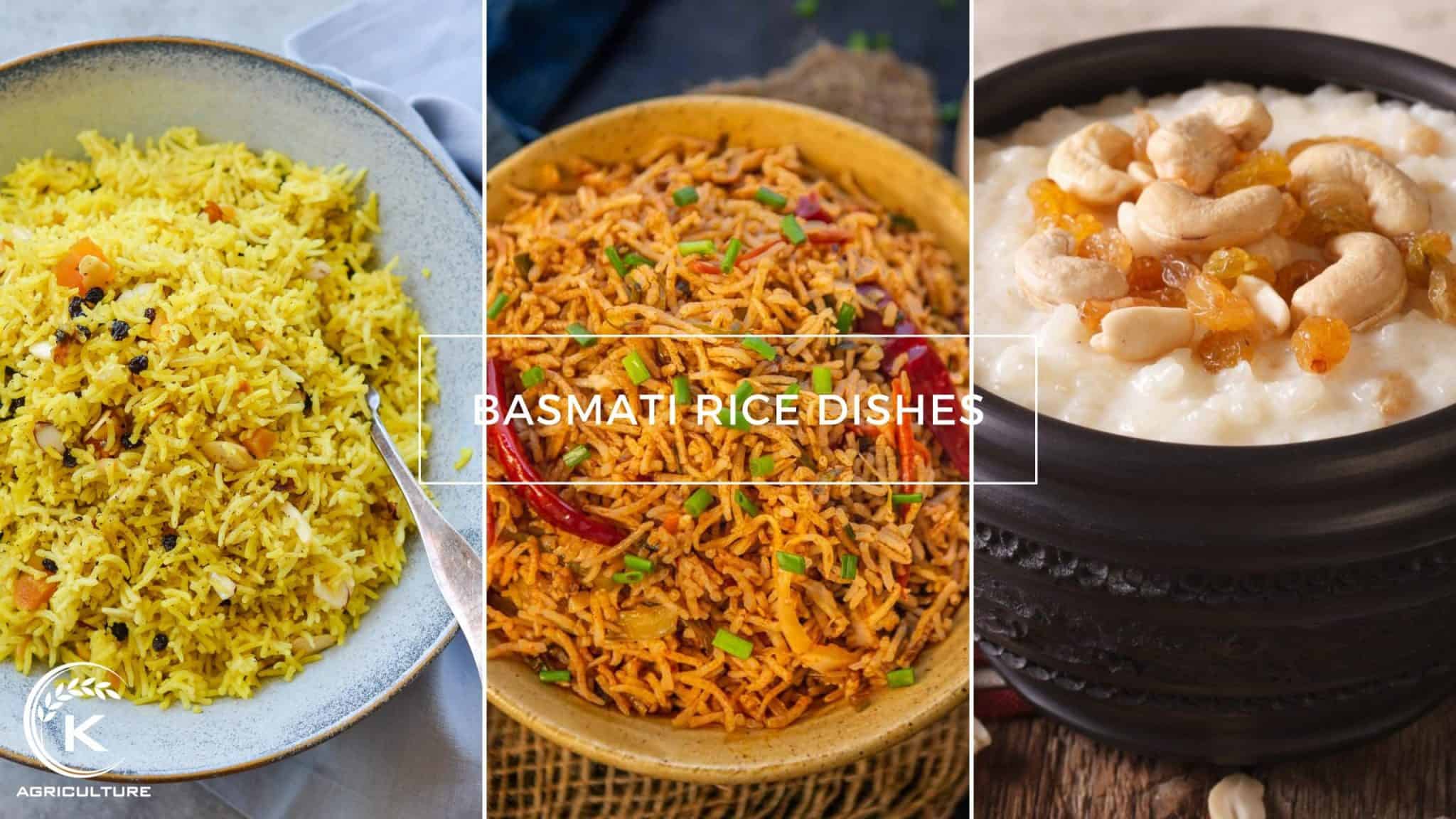Basmati rice vs jasmine rice are two of the most popular types of rice in the world. Both have their unique flavors and are widely used in various cuisines. But for those who are not familiar with the characteristics of each rice, it can be challenging to distinguish them.
In this article, we will take a closer look at the differences between basmati vs jasmine rice. We will discuss their origins, appearance, taste, and other essential features to help you choose the right rice for your next meal. Whether you’re a food enthusiast or just want to try something new, read on to learn about basmati vs jasmine rice.
People usually find it difficult to distinguish between jasmine rice vs basmati because they have similar features.
- Jasmine and basmati rice belong to long-grain fragrant rice
- Jasmine and basmati rice have white and brown versions
- Jasmine and basmati rice taste nutty, which are suitable for Asia cuisine

People usually find it difficult to distinguish jasmine rice from basmati
However, jasmine rice is different from basmati rice in 7 features including origin, grain shape, texture, nutrition, and use.
Contents
Origin
Jasmin rice
Jasmine rice is a type of long-grain rice with a pleasant aroma that is commonly found. The grains are lengthy, transparent, and shiny white. This rice has a soft, pliable texture and a naturally sweet taste that is enhanced by its fragrance, which resembles that of jasmine flowers. Although it is named after the jasmine flower, it has a fragrance similar to that of pandan leaves or popcorn. The rice has a short growing season of around 95-105 days and contains moisture, which causes it to soften when cooked. When cooked, the rice is sticky and aromatic, although it is not as sticky as glutinous rice.

Vietnam, Thailand, and Cambodia are major countries producing Jasmine rice
Basmati rice
Basmati rice is a long-grain rice variety that originated in the foothills of the Himalayas in northern India and Pakistan. The name “basmati” is derived from the Hindi word for “full of fragrance,” which speaks to the rice’s highly aromatic quality.

Basmati is mainly from India and Pakistan
Basmati rice has been cultivated in India for centuries, with records of its production dating back as far as the 6th century. It was later introduced to other regions by traders, and it has since become a staple in Middle Eastern and Persian cuisines as well.
Grain shape
Both basmati rice and jasmine rice are long grain rice, but when we put Basmati vs Jasmine rice under speculation, it is shape that differentiates them. Jasmine rice grains are short, typically measuring about 7mm in length, and have a round tip. On the other hand, basmati rice grains are longer, typically measuring around 9mm in length, and have a sharp, pointed tip.

Jasmine rice grain is short (about 7mm) and round at the tip

Basmati rice is longer (9 mm) and has a sharp tip
Texture
When it comes to rice cooking, the texture and structure are critical factors that set various types of rice apart. Jasmine rice or basmati rice is a long-grain variety that exhibit notable differences in texture due to their starch content.

Basmati and Jasmine rice texture
Jasmine rice is known for its stickiness when cooked, which is due to its higher amylopectin content. Amylopectin is a type of starch that is responsible for making rice grains stick together, resulting in moist clumps. This stickiness makes jasmine rice easier to eat with chopsticks than basmati rice, as the grains don’t separate as easily.
On the other hand, basmati rice contains more amylose in its starch content, which gives it a firmer and more distinct structure when cooked. This results in the signature fluffiness and individual grain separation that basmati rice is known for. The amylose content also makes it less sticky than jasmine rice.Overall, both jasmine and basmati rice have unique texture and characteristics, making them suitable for different types of dishes and cuisines.
Nutrition
Basmati vs jasmine rice nutrition is one of the distinctive features, even though both basmati vs jasmine rice are rich in nutrition, the number of specific nutrients such as calories and carbohydrates in each rice is not the same.
- Calories: While a 140 g serving of jasmine rice contains 238 calories, 140 grams of basmati consists of only 191 calories
- Carbohydrates: Jasmine rice carries 45g of carbohydrates, more than basmati rice with nearly 40g.
- Iron: Basmati rice is richer in iron than jasmine rice when white basmati rice has 2% and brown one has 4%. In contrast, no iron is found in white jasmine rice, and nearly 2% of it is contained in the brown version.
- Glycemic index: Jasmine rice double basmati rice in terms of glycemic index, with 109 and 58 respectively. For people suffering from diabetes, basmati rice is the healthier choice rather than jasmine rice.

Basmati and Jasmine rice nutrition
Use
Since the comparison between Basmati vs Jasmine rice calories shows the result of a lower rate of glycemic index for basmati, the usages of these two may varies according to this element. An application to diabetics patient may be taken into account for Basmati rice.
Even though there are distinctions in the Basmati vs Jasmine rice cooking time and taste, both are absolutely delicious and easy to cook, so don’t worry about choosing the right type of rice.

Jasmine rice dishes

Basmati rice dishes
Geographic popularity
Jasmine rice vs Basmati rice are two distinct varieties of rice that have different geographic popularity. Jasmine rice is more commonly used in Southeast Asian countries like Cambodia, Vietnam, and Thailand, where it is often referred to as “Thai fragrant rice” due to its characteristic aroma. On the other hand, Basmati rice is more widely grown and consumed in Middle Eastern and Indian countries like India, Pakistan, and Nepal. Because of its popularity, jasmine rice is also one of the main exporting products of K-agriculture, a leading supplier of rice from Vietnam.
The unique flavor and fragrance of Basmati rice make it a popular ingredient in traditional dishes like biryani and pulao, while jasmine rice is a staple in Southeast Asian cuisine and often served alongside dishes like curries and stir-fries. Despite their differences, both types of rice have become increasingly popular in Western countries, where they are used in a variety of recipes and enjoyed for their distinct flavors and textures.
Aroma
Although jasmine rice may not have a floral taste, its aroma is certainly unique and distinctive. Compared to basmati rice, jasmine rice is slightly sweeter with a subtle nutty flavor. Its aroma is also distinct and adds to the overall experience of enjoying this rice.
On the other hand, basmati rice is renowned for its fragrant aroma, which is where it gets its name. The aroma of basmati rice has been described as similar to freshly cooked popcorn, but with its own distinct scent. Along with its aroma, basmati rice has a nuttier taste that works well in various dishes.
If you are seeking a reputable supplier of basmati and jasmine rice, K-Agriculture Factory is the best option for you. We are the pioneer in providing Vietnamese agricultural products to the international market.
Please visit our website at https://k-agriculture.com/ or contact us via WhatsApp +84855555694 (Ms. Evelyn)





Please Post Your Comments & Reviews